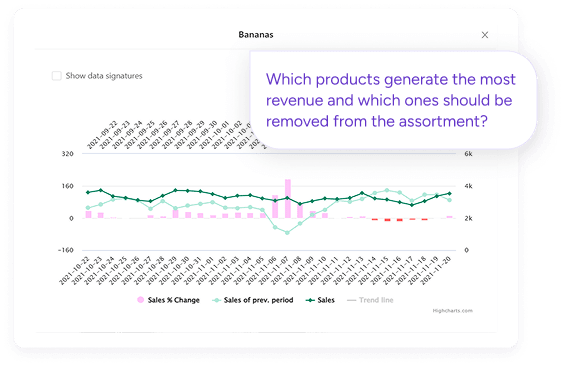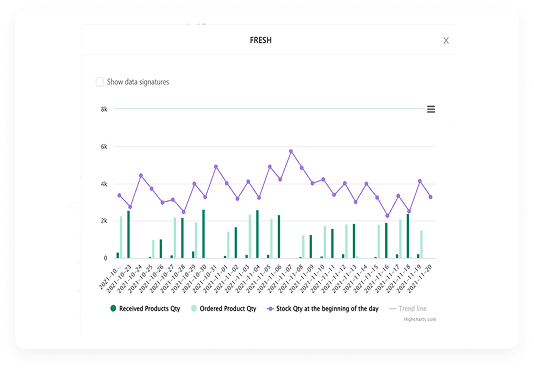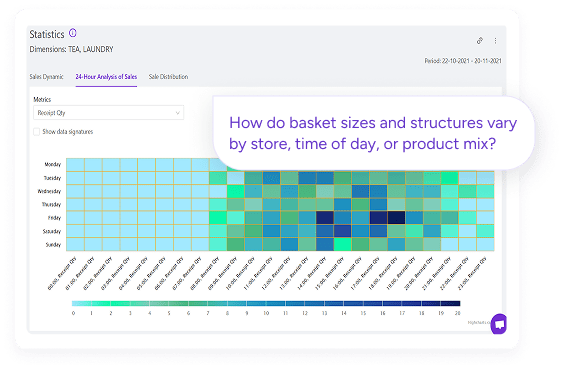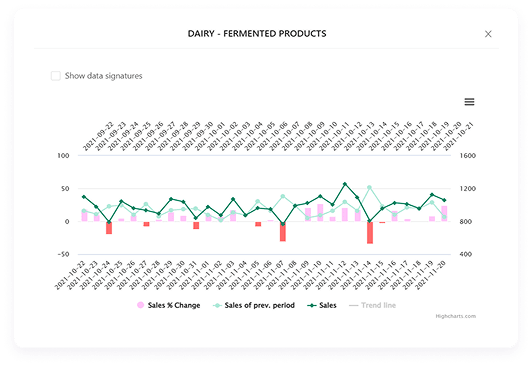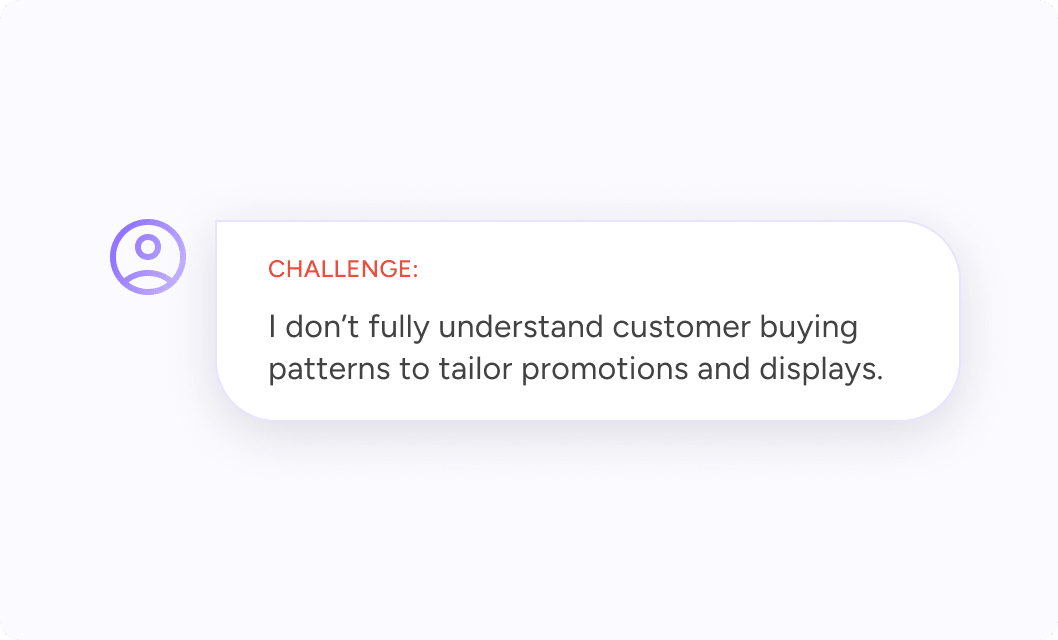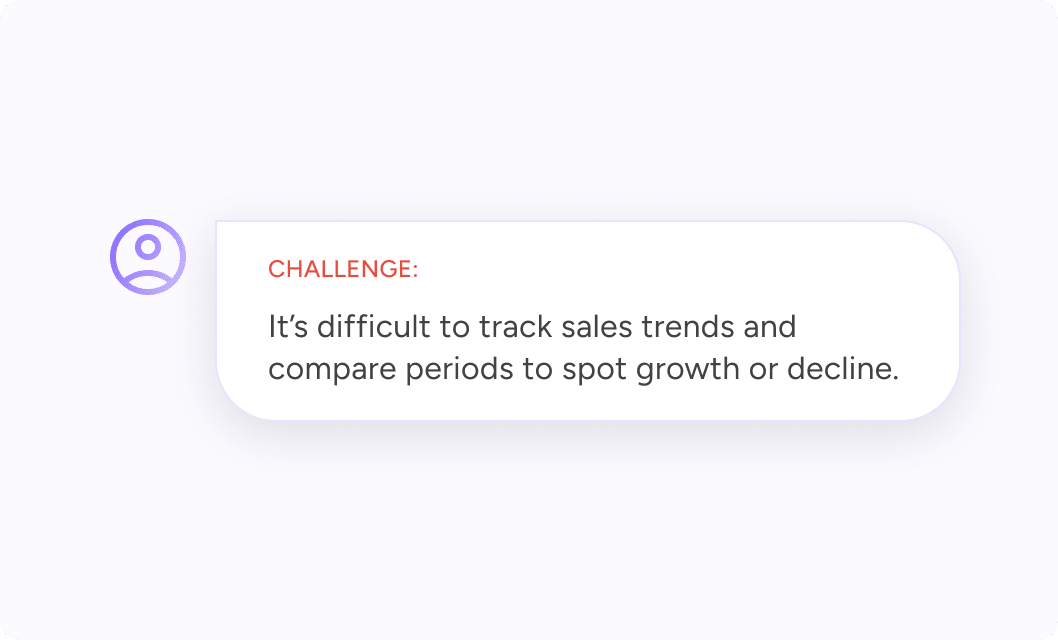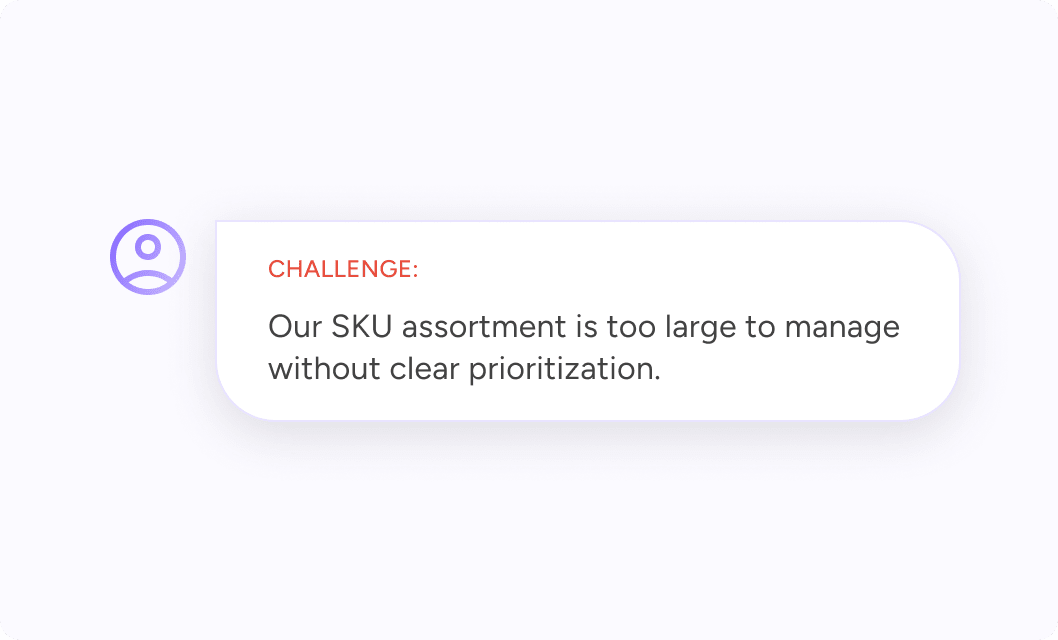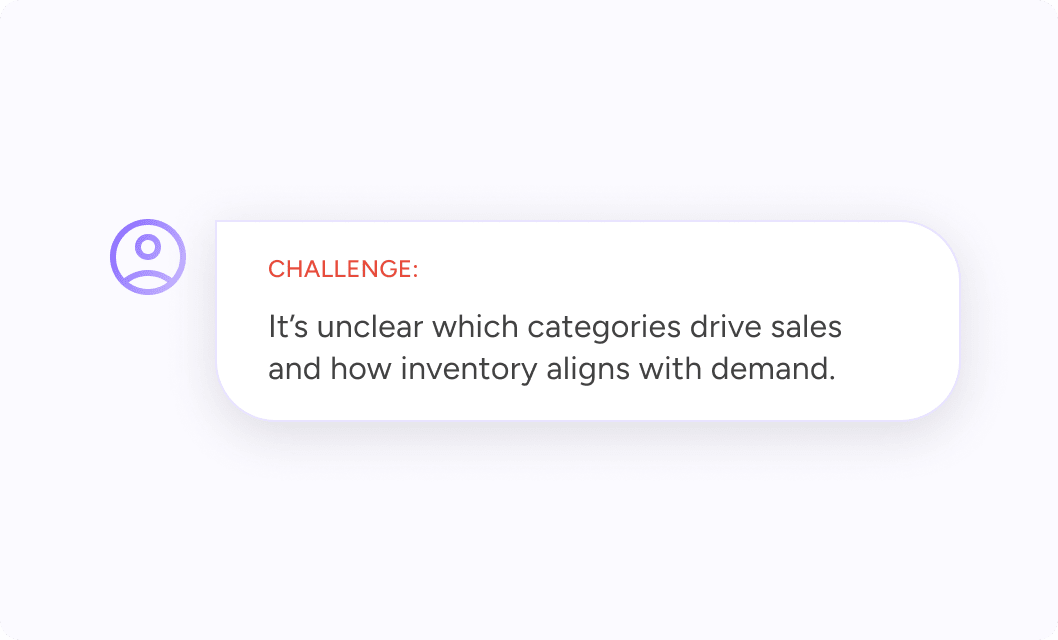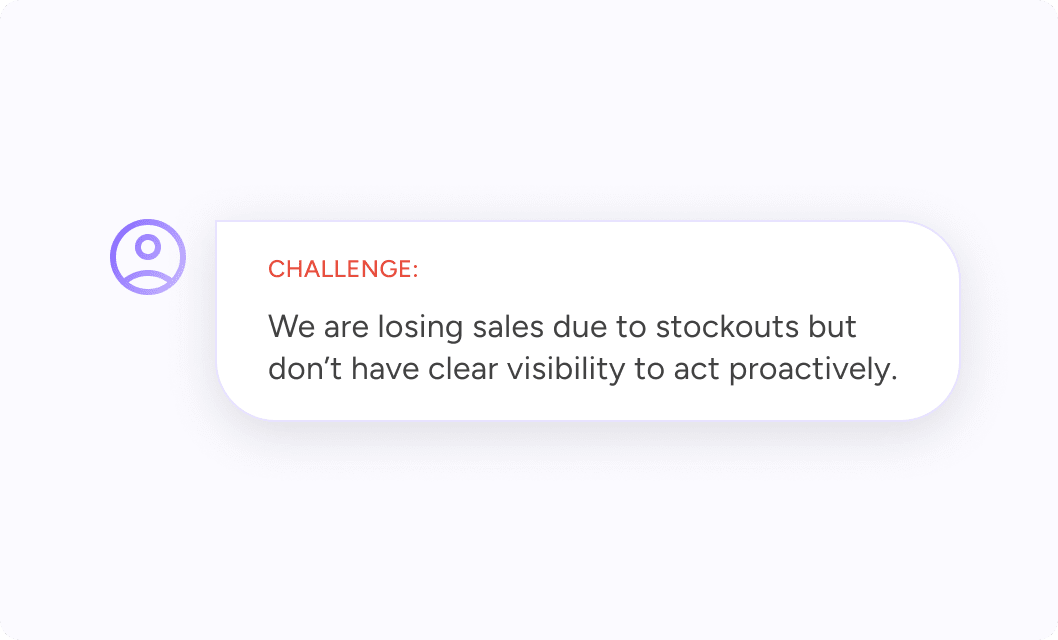Retail sales analytics reports
Retail sales data is only valuable when it drives decisions. With advanced retail sales analytics and sales reporting, retail teams can quickly identify underperforming locations, low-margin products, or emerging trends — and respond proactively.
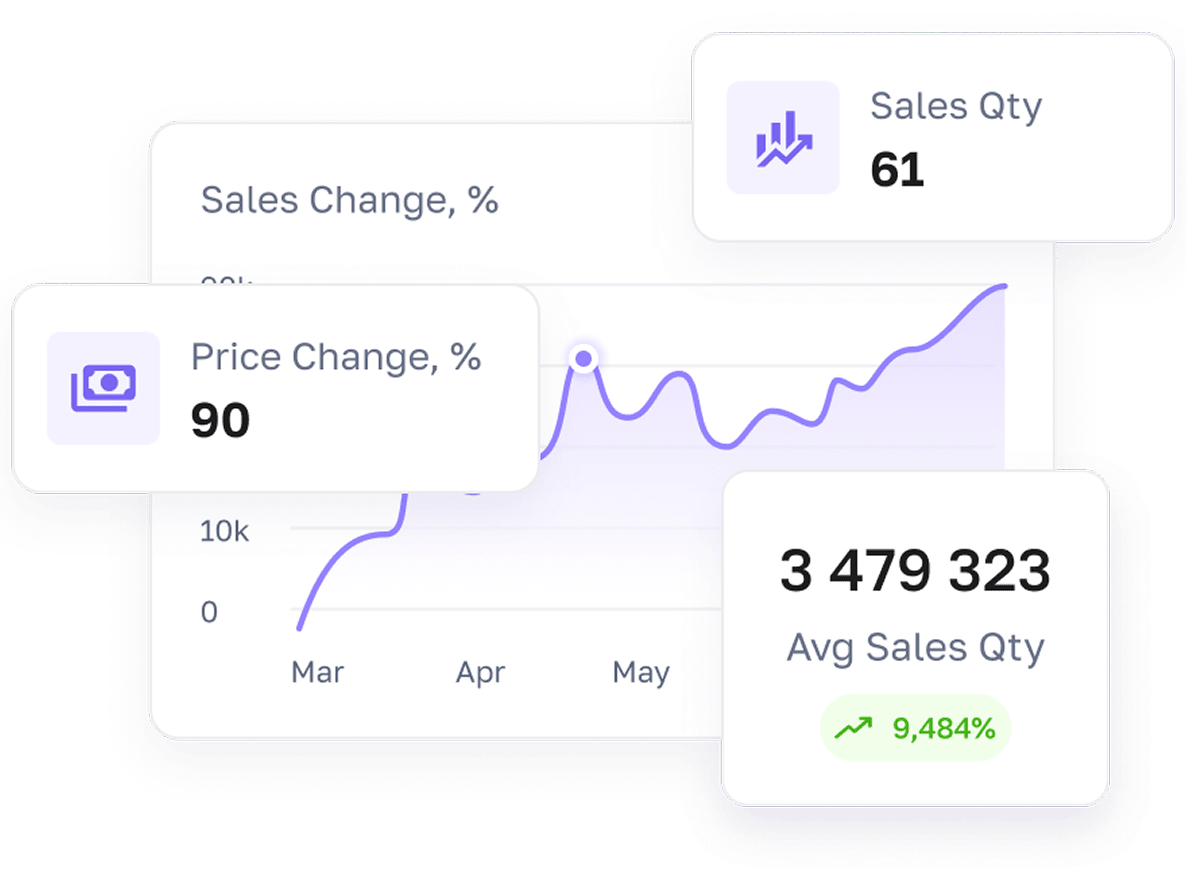
Detailed reports on sales for clearer KPIs and better planning

Time Efficiency
Compared to spreadsheets, structured sales reports significantly reduce the time spent on manual data preparation. All calculations and views are already in place — ready for analysis and decision-making.

Insights at Every Level
Sales data is available by store, category, brand, and SKU — with the necessary breakdowns and structure. Analysts can immediately access the performance of any segment without building reports from scratch.

Decisions Backed by Data
Up-to-date retail sales data ensures that decisions are based on facts, not assumptions. This makes it easier for managers to explain and justify their actions to both colleagues and stakeholders

Understanding Sales KPI Gaps
Did we miss the sales plan — and why? These questions become easier to answer when the data is transparent. Zoom in on weak spots, spot missed opportunities, and turn uncertainty into action.

Sales data visualization
Dashboards update automatically and clearly show key retail sales performance. All necessary information is centralized within one system — no need to switch between tools or wait for manual updates.

Improved procurement planning
With descriptive and diagnostic analytics, purchasing decisions become more informed. Seasonal fluctuations and sudden demand changes can be predicted and accounted for, reducing risk and overstock.
Retail data analytics in action: selected report examples
Business-critical issues resolved with retail data analytics
Datawiz- a single source of truth for your retail data
All your analytics in one place
From sales and inventory to staff performance — every key metric is centralized. It’s convenient for teams and gives managers full visibility to stay in control and react fast.
Accurate forecasting based on real data
Descriptive analytics help you plan ahead with confidence. Instead of relying on assumptions, you forecast using customer behavior, seasonality, and actual sales trends.
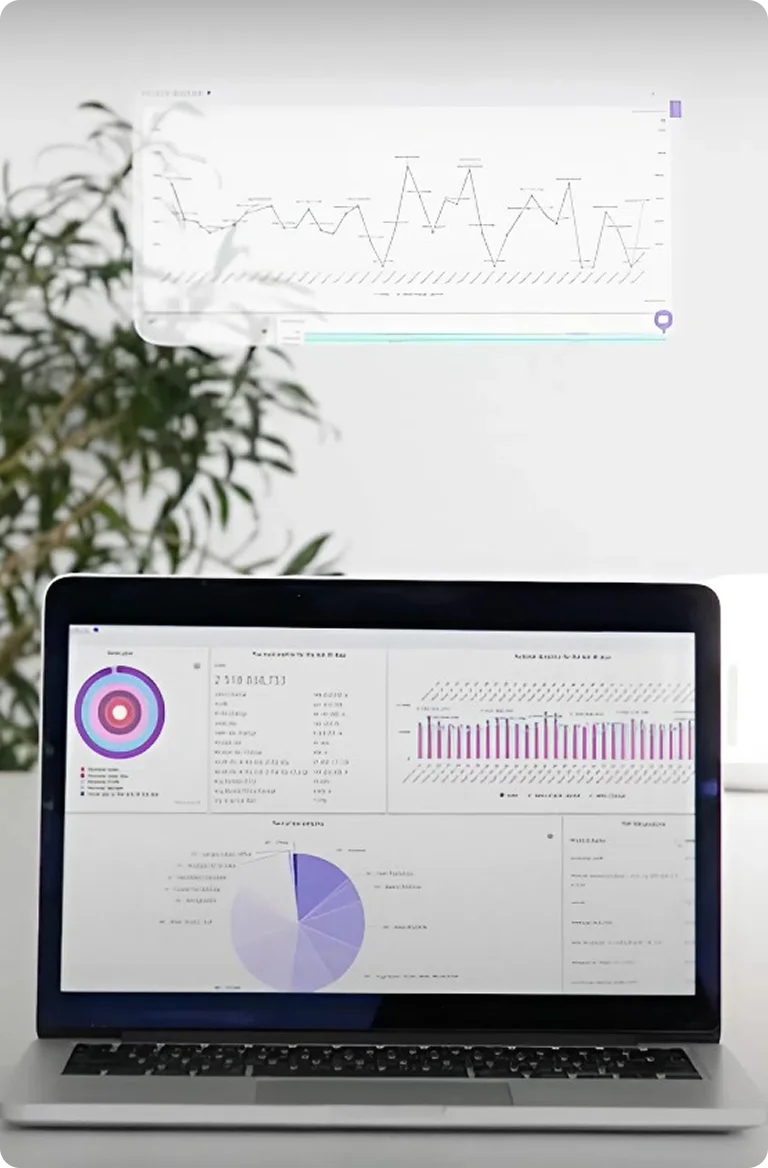
Local-level control for stores
Datawiz lets you break down performance by store, category, or manager. Spot problems early, address local issues fast, and support your regional teams with actionable insights.
Intuitive system — no tech skills required
With a user-friendly interface, built-in tips, and live chat support, your team can get started instantly. No analysts needed and no delays. Just fast onboarding and immediate value.
Q&A
With Datawiz.io, retailers can analyze sales by baskets, products (ABC/XYZ), categories, and stores. Reports highlight sales dynamics and lost sales, helping managers detect trends, inefficiencies, and growth opportunities.
A sales report typically covers sales volumes, revenue, margins, and dynamics across products, categories, and stores. Datawiz.io reports also track lost sales and customer basket structure for deeper insights.
Advanced analytics provides ready-to-use reports, interactive dashboards, and real-time updates. Unlike spreadsheets, Datawiz.io helps detect sales changes instantly, monitor store/category performance, and reduce manual errors.
Retailers can track revenue, margin, sales growth, lost sales, product turnover (ABC/XYZ), basket value, and store/category performance. Datawiz.io visualizes these KPIs to support faster and more accurate decisions.
 What's new?
What's new?